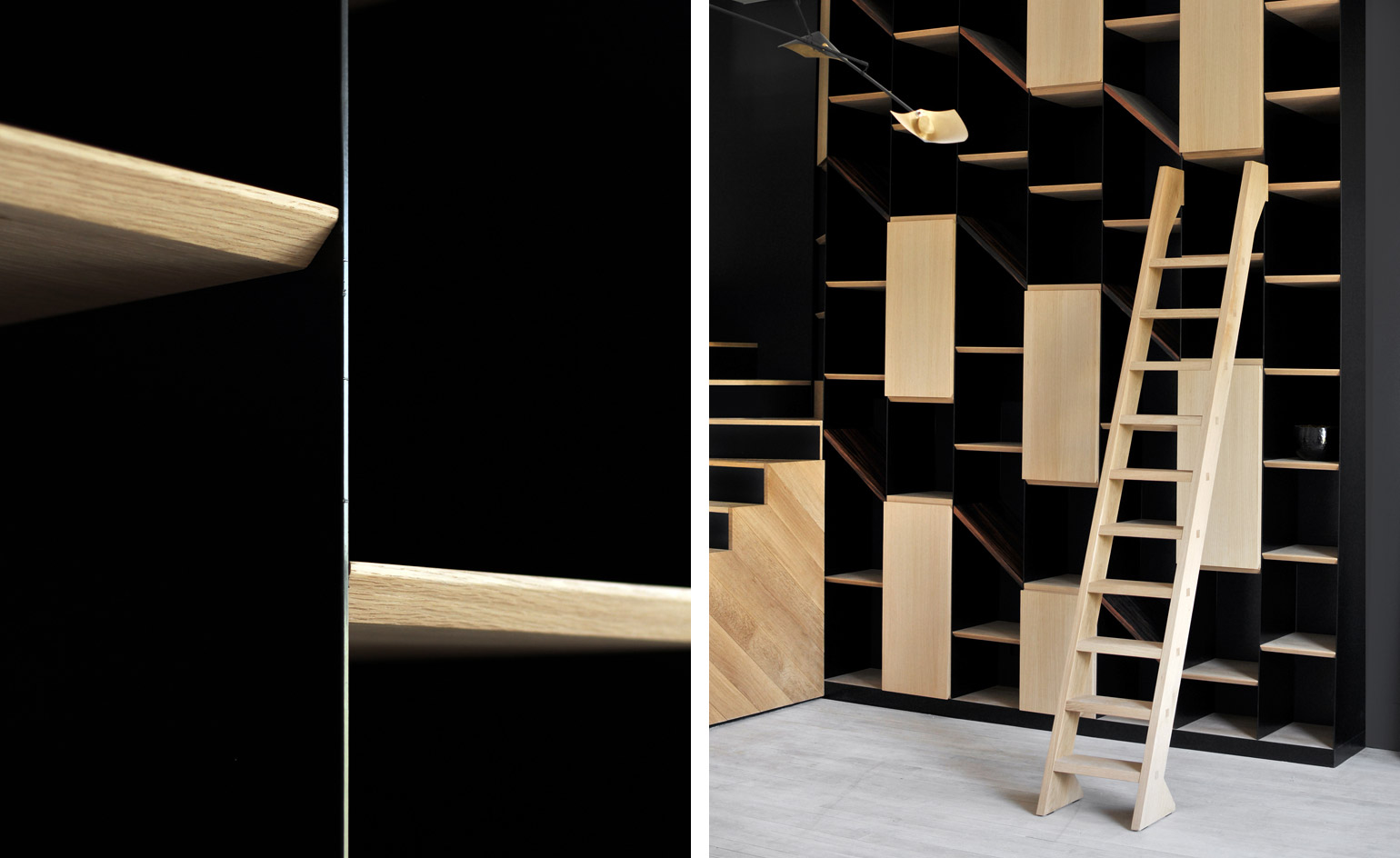Last chance to see: Aboriginal textile artists take a seat at the table
A new exhibition at JamFactory Adelaide (until 28 November 2021) places the work of Aboriginal artists in conversation with contemporary Australian furniture design
Dean Toepfer - Photography

Textile works by Aboriginal and Torres Strait Islander artists are having a well-deserved moment in Australia’s fashion industry, but this series of new pieces commissioned for the Tarnanthi Art Fair demonstrate that inroads are being made into the furniture world too.
For ‘Rekkan / Tamuwu / Nyinakat (sit/sit down)’, South Australian studio and gallery JamFactory has paired three First Nations textile artists, working from arts centres around the Northern Territory, with furniture designers based in Adelaide, on Kaurna Country.
Collaborative furniture designs

‘Boulder’ chair and footrest by Caren Elliss and Keturah Nangala Zimran
The shapes are eclectic and the palette is bold, from the light touch of Ndjébbana-Kuninjku artist Raylene Bonson’s ‘Love Bench’ collaboration with design duo Daniel To and Emma Aiston – an elevated twist on fold-out camping furniture – to Caren Elliss and Luritja-Pintupi artist Keturah Nangala Zimran’s more lounge-ready ‘Boulder Chair’.
For the ‘Love Bench’, To and Aiston (who run their own design studio, Daniel Emma, in addition to serving as JamFactory’s creative directors) sought to create a ‘utilitarian object that could be transported with ease’, while also complementing the story of an ancestral river-crossing told through Bonson’s linework.
‘Inspired by and wanting to reflect life in and around Maningrida [Bonson’s home], we designed two foldable, functional benches that celebrate the true nature of the Wubbunj (paperbark canoe) which Raylene’s silkscreen fabric depicts,’ the pair explain of their pastel-coloured steel frame. ‘We really liked the concept of the piece actually being used, especially on Country as an everyday, useful object.’

‘Pupuni Punarika (Good Waterlily)’ by Dean Toepfer and Roslyn Orsto
Zimran’s vivid block colours and curved shapes illustrate the rocks and dunes of her home in the central desert. Printed onto linen and stretched over Australian Blackwood by Elliss, the plump armchair and footrest set evokes the soft-hard duality of the landscape, while mirroring the geology of its upholstery.
Sandwiched between smooth panels of Tasmanian Oak by designer Dean Toepfer, Tiwi artist Roslyn Orsto’s Punarika (waterlily) pattern celebrates the waterways and life cycles of the Tiwi Islands, just north of the mainland.
In passing, the bright colours and shapes seen across the collection might seem to evoke the kind of day-glo Australiana that non-Indigenous artists like Ken Done made famous in the 1980s. But these pieces tap into something that runs deeper – and continues to evolve.
‘“Australian design” is nothing without the input of First Nations people,’ say To and Aiston of the exchange of knowledge and skills at the heart of the collection. ‘Without this, it simply becomes a single-layered story.’
INFORMATION
‘Rekkan / Tamuwu / Nyinakat (sit/sit down)’ is on view until 28 November 2021
jamfactory.com.au
ADDRESS
19 Morphett St
Adelaide SA 5000
Australia
Receive our daily digest of inspiration, escapism and design stories from around the world direct to your inbox.
-
 Volvo’s quest for safety has resulted in this new, ultra-legible in-car typeface, Volvo Centum
Volvo’s quest for safety has resulted in this new, ultra-legible in-car typeface, Volvo CentumDalton Maag designs a new sans serif typeface for the Swedish carmaker, Volvo Centum, building on the brand’s strong safety ethos
-
 We asked six creative leaders to tell us their design predictions for the year ahead
We asked six creative leaders to tell us their design predictions for the year aheadWhat will be the trends shaping the design world in 2026? Six creative leaders share their creative predictions for next year, alongside some wise advice: be present, connect, embrace AI
-
 10 watch and jewellery moments that dazzled us in 2025
10 watch and jewellery moments that dazzled us in 2025From unexpected watch collaborations to eclectic materials and offbeat designs, here are the watch and jewellery moments we enjoyed this year
-
 Flack Studio and Volker Haug's lighting collection makes its Australian debut with a showroom refresh
Flack Studio and Volker Haug's lighting collection makes its Australian debut with a showroom refreshThe ‘Me and You’ lighting collection by Volker Haug Studio and Flack Studio launches in Australia with six new additions and a Melbourne showroom revamp
-
 Wallpaper* Global Interiors: a snapshot of design in Oceania
Wallpaper* Global Interiors: a snapshot of design in OceaniaOur edit of furniture, objects and lighting from Australia and New Zealand include pieces by Resident, Daniel Emma and Jam Factory
-
 Australian designers examine contemporary domestic life for Rigg Design Prize
Australian designers examine contemporary domestic life for Rigg Design Prize -
 Pleasure island: the decadent interiors of Australia’s first lady of modernist design
Pleasure island: the decadent interiors of Australia’s first lady of modernist design -
 Magic box: Charles Kalpakian’s puzzle-like interiors project changes the rules of the game
Magic box: Charles Kalpakian’s puzzle-like interiors project changes the rules of the game -
 SP01 makes its stylish US debut, with a little help from Ladies & Gentlemen Studio
SP01 makes its stylish US debut, with a little help from Ladies & Gentlemen Studio -
 Happy hours: Bill Denheld puts a bold new face on grandfather clocks
Happy hours: Bill Denheld puts a bold new face on grandfather clocks -
 Knock on wood: Snøhetta-designed Aesop ION store opens in Singapore
Knock on wood: Snøhetta-designed Aesop ION store opens in Singapore